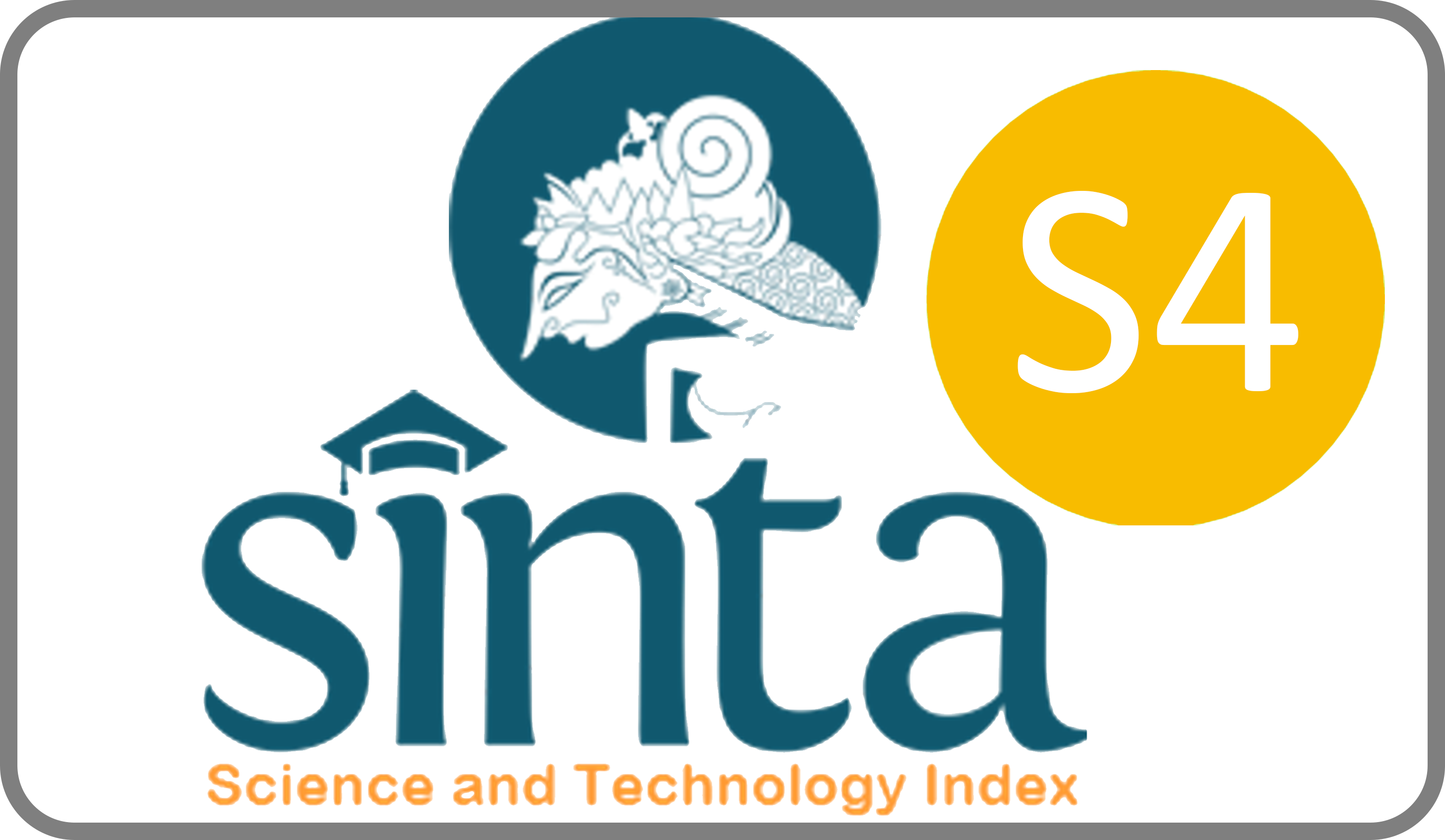DEVELOPMENT OF TELEMEDICINE APPLICATION BASED ON ARTIFICIAL INTELLIGENCE IN THE HANDLING OF DIABET FOOT
Downloads
Introduction: Diabetes mellitus is a metabolic disorder characterized by increased blood glucose levels (hyperglycemia) due to impaired insulin secretion and insulin action. Diabetic foot ulcers are chronic and difficult to heal is the most common cause of non-traumatic amputations in patients with diabetes mellitus which reaches 82%. Telemedicine technology based on artificial intelligence can be used as a facility for diabetic foot patients by providing education, consultation and direction in treating diabetic feet. Research Methods: The method used in this research is literature study. Literature study conducted by the author is to look for various written sources, either in the form of books, archives, magazines, articles and journals, as well as documents relevant to the problem being studied. Result: Telemedicine application based on artificial intelligence is a solution for DM patients, especially diabetic foot complications. Discussion: The telemedicine application provides 24-hour service by providing education about diabetic foot care to avoid infection, consultation on the administration of drugs such as insulin and other diabetes drugs. Artificial intelligence in telemedicine allows this application to work 24 hours a day. Conclusion: Diabetes mellitus is still a complex problem worldwide. Complications that occur, especially diabetic feet reduce the quality of life of DM patients. Telemedicine application based on artificial intelligence is a solution that can be used to perform routine care for diabetic foot patients.
Keywords: Telemedicine, Artificial intelligence, Diabetic foot, Diabetes Mellitus
DAFTAR PUSTAKA
- Braza DW, Martin JNY. Diabetic Foot and Peripheral Arterial Disease [Internet]. Fourth Edi. Essentials of Physical Medicine and Rehabilitation. Elsevier Inc.; 2020. 719-723 p. Available from: https://doi.org/10.1016/B978-0-323-54947-9.00129-2
- denDekker AD, Gallagher KA. Dysregulated inflammation in diabetic wounds [Internet]. Wound Healing, Tissue Repair, and Regeneration in Diabetes. Elsevier Inc.; 2020. 81-95 p. Available from: http://dx.doi.org/10.1016/B978-0-12-816413-6.00005-8
- Grennan D. Diabetic Foot Ulcers. JAMA - J Am Med Assoc. 2019;321(1):114.
- Boulton AJM, Young MJ. The Diabetic Foot [Internet]. Diabetes in Old Age: Third Edition. Elsevier Inc.; 2009. 113-135 p. Available from: http://dx.doi.org/10.1016/B978-0-12-816413-6.00001-0
- Cho NH, Shaw JE, Karuranga S, Huang Y, da Rocha Fernandes JD, Ohlrogge AW, et al. IDF Diabetes Atlas: Global estimates of diabetes prevalence for 2017 and projections for 2045. Diabetes Res Clin Pract [Internet]. 2018;138:271–81. Available from: https://doi.org/10.1016/j.diabres.2018.02.023
- Khandelwal P, Khanna S. Diabetic peripheral neuropathy: An insight into the pathophysiology, diagnosis, and therapeutics [Internet]. Wound Healing, Tissue Repair, and Regeneration in Diabetes. Elsevier Inc.; 2020. 49-77 p. Available from: http://dx.doi.org/10.1016/B978-0-12-816413-6.00004-6
- Reddy SSK, Tan M. Diabetes mellitus and its many complications [Internet]. Diabetes Mellitus. Elsevier Inc.; 2020. 1-18 p. Available from: https://doi.org/10.1016/B978-0-12-820605-8.00001-2
- Vennos C, Schwabl H, Pinto D. Phytotherapeutics in Diabetes and Diabetic Complications. Bioact Food as Diet Interv Diabetes. 2019;309–15.
- Meloni M, Izzo V, Giurato L, Gandini R, Uccioli L. Management of diabetic persons with foot ulceration during COVID-19 health care emergency: Effectiveness of a new triage pathway. Diabetes Res Clin Pract [Internet]. 2020;165:108245. Available from: https://doi.org/10.1016/j.diabres.2020.108245
- Prandi V, Lenta E, Bracco A, Conterno E, Nigro E, Costa CD. Patient satisfaction assessment in telemedicine. Clin Nutr ESPEN [Internet]. 2020;40:487. Available from: https://doi.org/10.1016/j.clnesp.2020.09.244
- García-Villasante E, Baca-Carrasco V, Gutierrez-Ortiz C, Pinedo-Torres I. Diabetes care during COVID 19: Experience in telemedicine from a developing country. Diabetes Metab Syndr Clin Res Rev [Internet]. 2020;14(5):1519. Available from: https://doi.org/10.1016/j.dsx.2020.07.046
- Li C. Biodiversity assessment based on artificial intelligence and neural network algorithms. Microprocess Microsyst [Internet]. 2020;79(September):103321. Available from: https://doi.org/10.1016/j.micpro.2020.103321
- Kane-Gill SL, Rincon F. Expansion of Telemedicine Services: Telepharmacy, Telestroke, Teledialysis, Tele–Emergency Medicine. Crit Care Clin [Internet]. 2019;35(3):519–33. Available from: https://doi.org/10.1016/j.ccc.2019.02.007
- Gogia S. Telesupport for the primary care practitioner. Fundam Telemed Telehealth. 2019;161–83.
- Mo C, Sun W. Point-by-point feature extraction of artificial intelligence images based on the Internet of Things. Comput Commun [Internet]. 2020;159(March):1–8. Available from: https://doi.org/10.1016/j.comcom.2020.05.015
- Dorsey ER, Topol EJ. Telemedicine 2020 and the next decade. Lancet [Internet]. 2020;395(10227):859. Available from: http://dx.doi.org/10.1016/S0140-6736(20)30424-4
- Corbett JA, Opladen JM, Bisognano JD. Telemedicine can revolutionize the treatment of chronic disease. Int J Cardiol Hypertens [Internet]. 2020;7(August):100051. Available from: https://doi.org/10.1016/j.ijchy.2020.100051
- Berg WT, Goldstein M, Melnick AP, Rosenwaks Z. Clinical implications of telemedicine for providers and patients. Fertil Steril [Internet]. 2020;114(6):1129–34. Available from: https://doi.org/10.1016/j.fertnstert.2020.10.048
- Al-Thani D, Monteiro S, Tamil LS. Design for eHealth and telehealth [Internet]. Design for Health. INC; 2020. 67-86 p. Available from: http://dx.doi.org/10.1016/B978-0-12-816427-3.00004-X
- Al-Samarraie H, Ghazal S, Alzahrani AI, Moody L. Telemedicine in Middle Eastern countries: Progress, barriers, and policy recommendations. Int J Med Inform [Internet]. 2020;141(July):104232. Available from: https://doi.org/10.1016/j.ijmedinf.2020.104232
- Banerjee A, Chakraborty C, Rathi M. Medical Imaging, Artificial Intelligence, Internet of Things, Wearable Devices in Terahertz Healthcare Technologies [Internet]. Terahertz Biomedical and Healthcare Technologies. Elsevier Inc.; 2020. 145-165 p. Available from: http://dx.doi.org/10.1016/B978-0-12-818556-8.00008-2
- Kindle RD, Badawi O, Celi LA, Sturland S. Intensive Care Unit Telemedicine in the Era of Big Data, Artificial Intelligence, and Computer Clinical Decision Support Systems. Crit Care Clin. 2019;35(3):483–95.
- Bardy P. The Advent of Digital Healthcare. Hum Chall Telemed. 2019;3–17.
- David Y. Telehealth, telemedicine, and telecare [Internet]. Second Edi. Clinical Engineering Handbook, Second Edition. Elsevier Inc.; 2019. 550-555 p. Available from: https://doi.org/10.1016/B978-0-12-813467-2.00083-3
- D'Arqom A, Indiastuti D, Nasution Z, Melbiarta R. PENGEMBANGAN KADER SEKOLAH MENENGAH UNTUK MENURUNKAN INSIDEN THALASSEMIA DI KABUPATEN BULAK, SURABAYA. 2021. Jurnal Layanan Masyarakat. 2021;5(2)

This work is licensed under a Creative Commons Attribution-ShareAlike 4.0 International License.
JLM by Unair is licensed under a Creative Commons Attribution-ShareAlike 4.0 International License.
1. The journal allows the author to hold the copyright of the article without restrictions.
2. The journal allows the author(s) to retain publishing rights without restrictions
3. The legal formal aspect of journal publication accessibility refers to Creative Commons Attribution Share-Alike (CC BY-SA).
4. The Creative Commons Attribution Share-Alike (CC BY-SA) license allows re-distribution and re-use of a licensed work on the conditions that the creator is appropriately credited and that any derivative work is made available under "the same, similar or a compatible license”. Other than the conditions mentioned above, the editorial board is not responsible for copyright violation.


















